
Bulletin
wall bulletinMenu
Authors: 超级管理员 | Edit: yannn
The current monitoring period from January to April of 2017 covers the growth season of winter crops and planting season of summer crops in southern regions. CropWatch agroclimatic and agronomic indicators indicate above average crop condition in the North American MPZ.
During the monitoring period, warm and humid weather prevailed in the MPZ, which was conducive to crop growth. The agroclimatic indicators show that RAIN was 26% above average, TEMP 2.1°C above, and RADPAR was significant below average (-6%) as a result of the continuous precipitation. The extreme weather events that occurred in this reporting period include abnormally above average temperature in the late of January (+5-10°C) and February (7-11°C), and 210 mm above average rainfall in the southern Corn Belt. Almost all major crop production regions recorded abundant rainfall, including Northern Plains (+RAIN, 56.5%), Corn Belt (+31.7%), California (+76.2%), Blue Grass (+17.4), and Canadian Prairies (+10.6%) which provided adequate soil water for the growth of winter crops. Very few drought pockets are shown in the Minimum Vegetation Health Index map (VHIn).
Agronomic indicators confirm the generally above-average crop condition. Compared to the average of the past five years, accumulated biomass potential (BIOMSS) increased by 17%, with positive departure in almost all areas, for instance in the Northern Plains (BIOMSS, +33.8%) and the Corn Belt (+17.9%). Above average crop condition is confirmed by a high average VCIx value (0.85). However, a significant negative BIOMSS departure and below average VCIx value (<0.5) were observed in Eastern Colorado, Eastern Wyoming, and Western Nebraska due to heavy snow, resulting in unfavorable crop growth condition.
When considering these various agroclimatic and agronomic indicators together with the CropWatch indicator for cropped arable lands—which shows 47% of arable lands cropped; an increase of 5 percentage points over the five-year average, above average crop production can be expected for the North American MPZ.
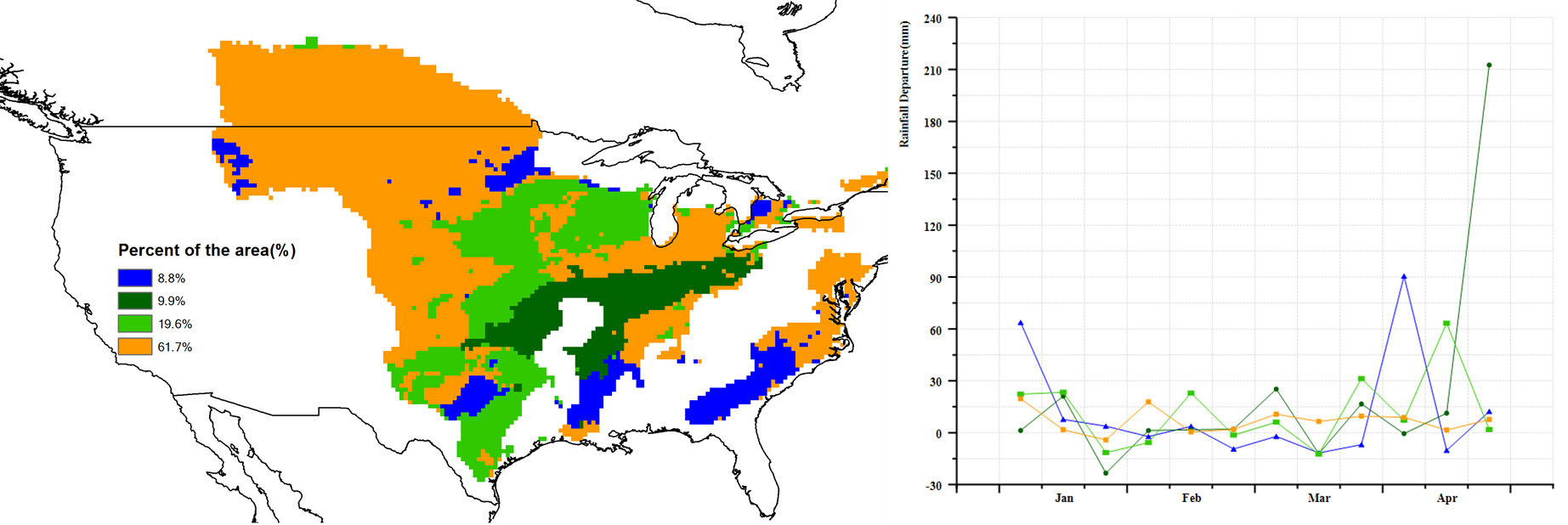
a. Spatial distribution of rainfall profiles b. Profiles of rainfall departure from average (mm)
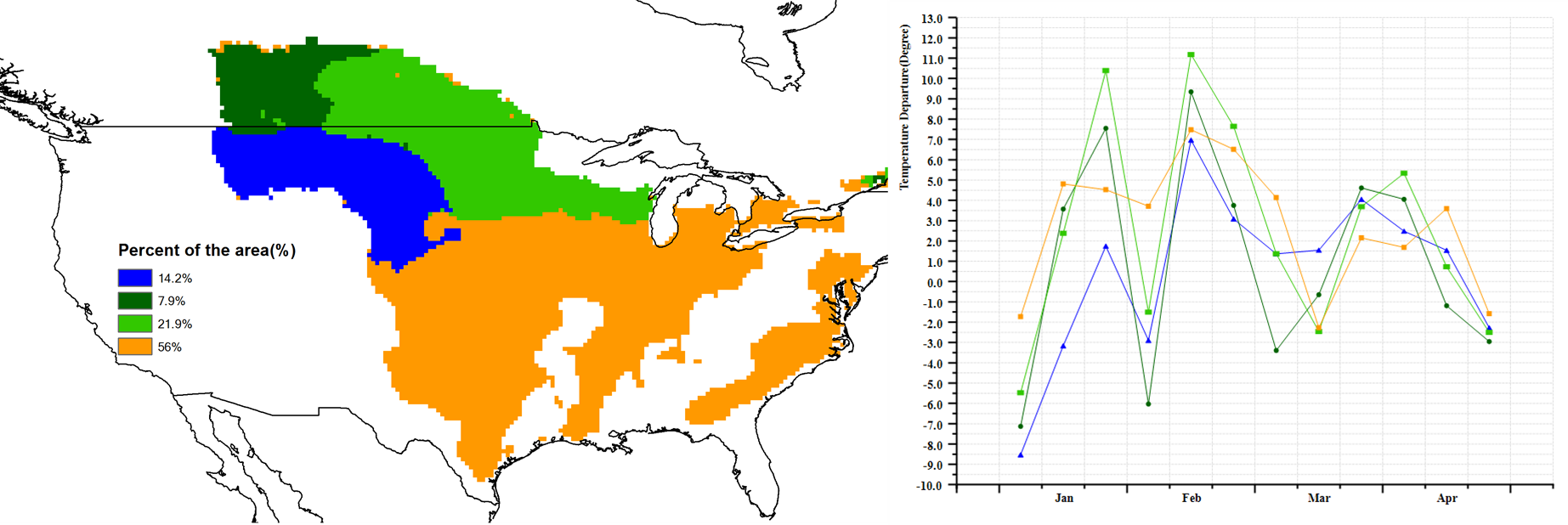
c. Spatial distribution of temperature profiles d. Profiles of temperature departure from average (°C)
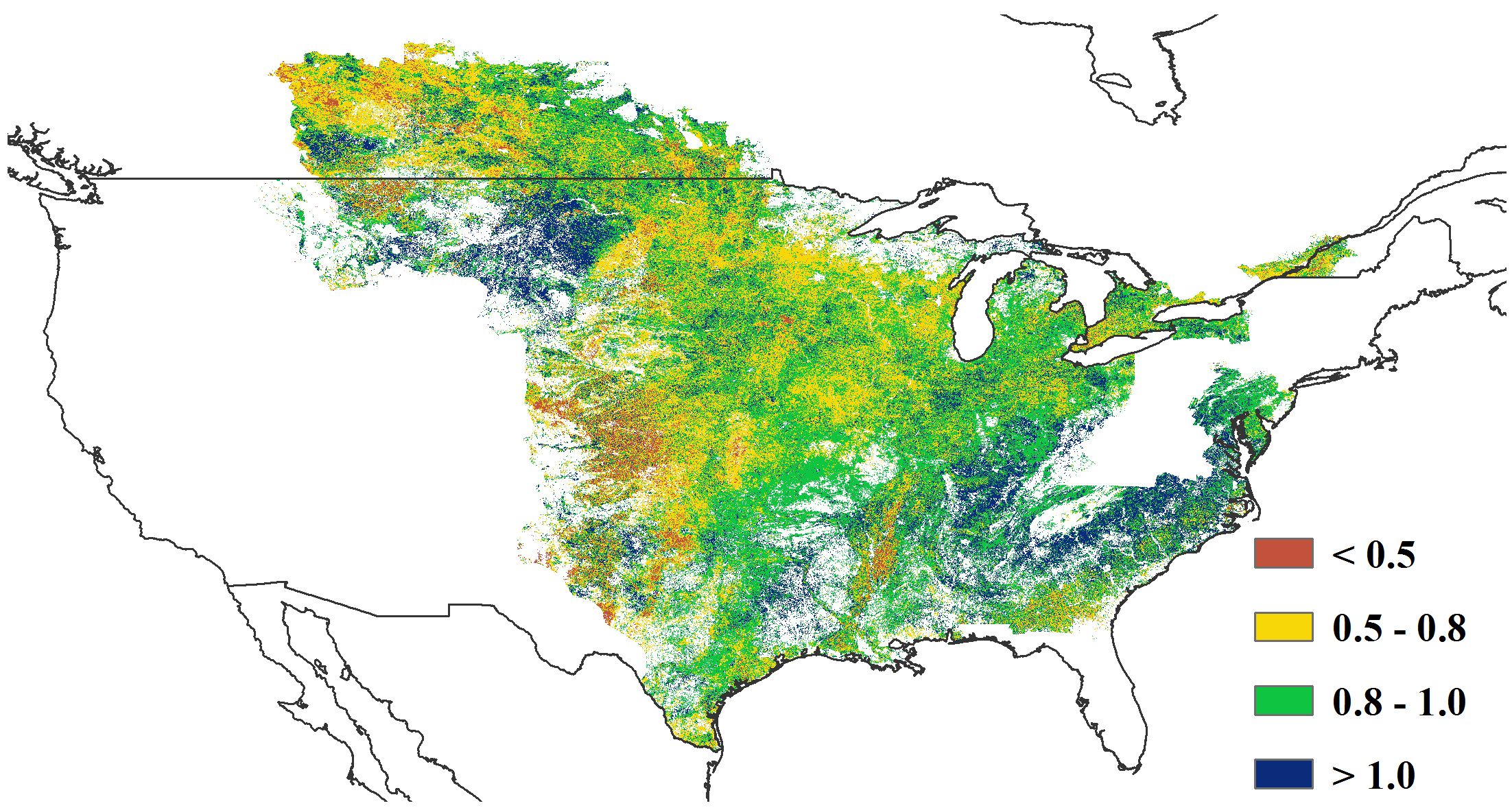
e. Maximum VCI
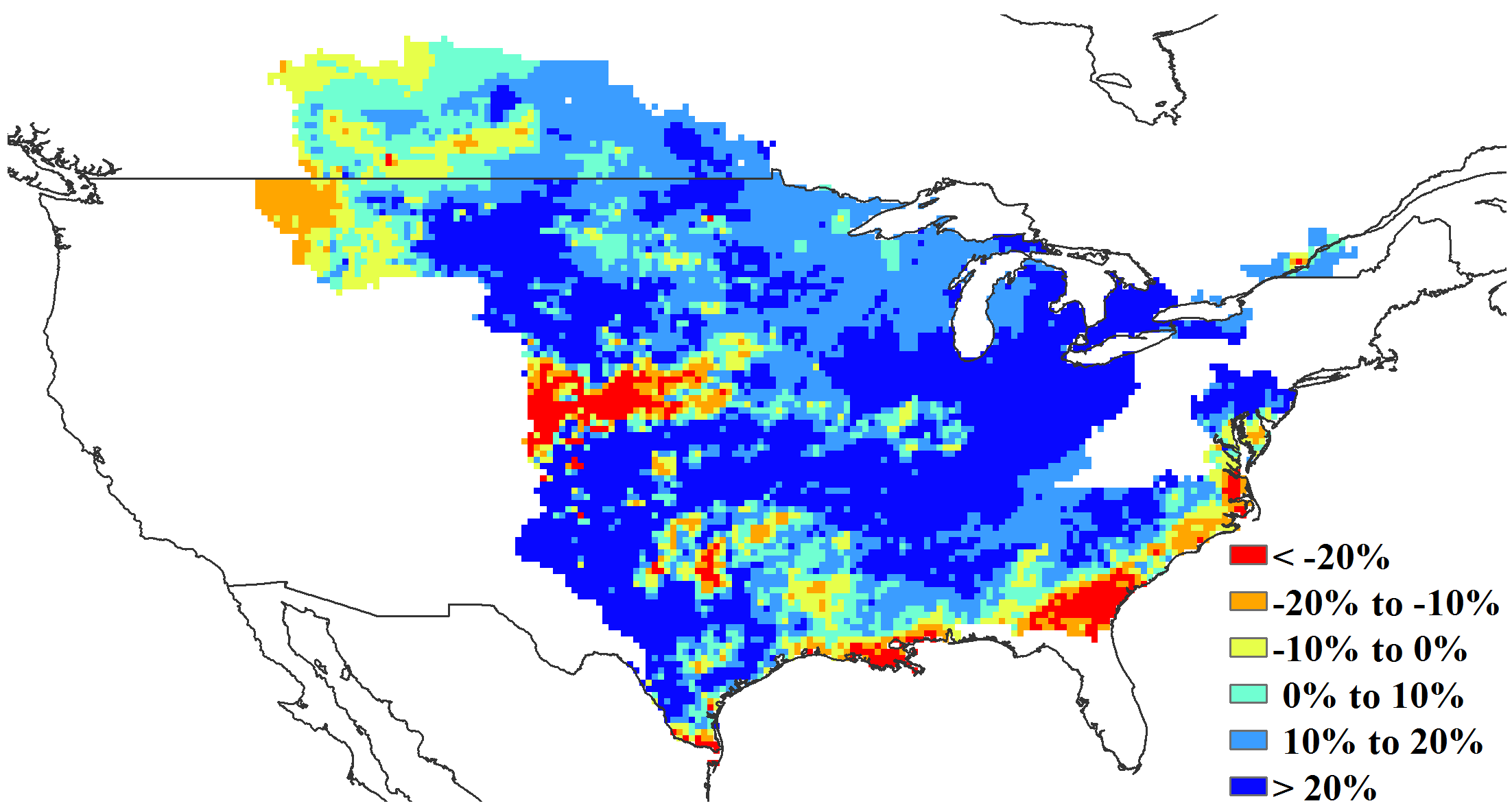
g. Biomass accumulation potential departure
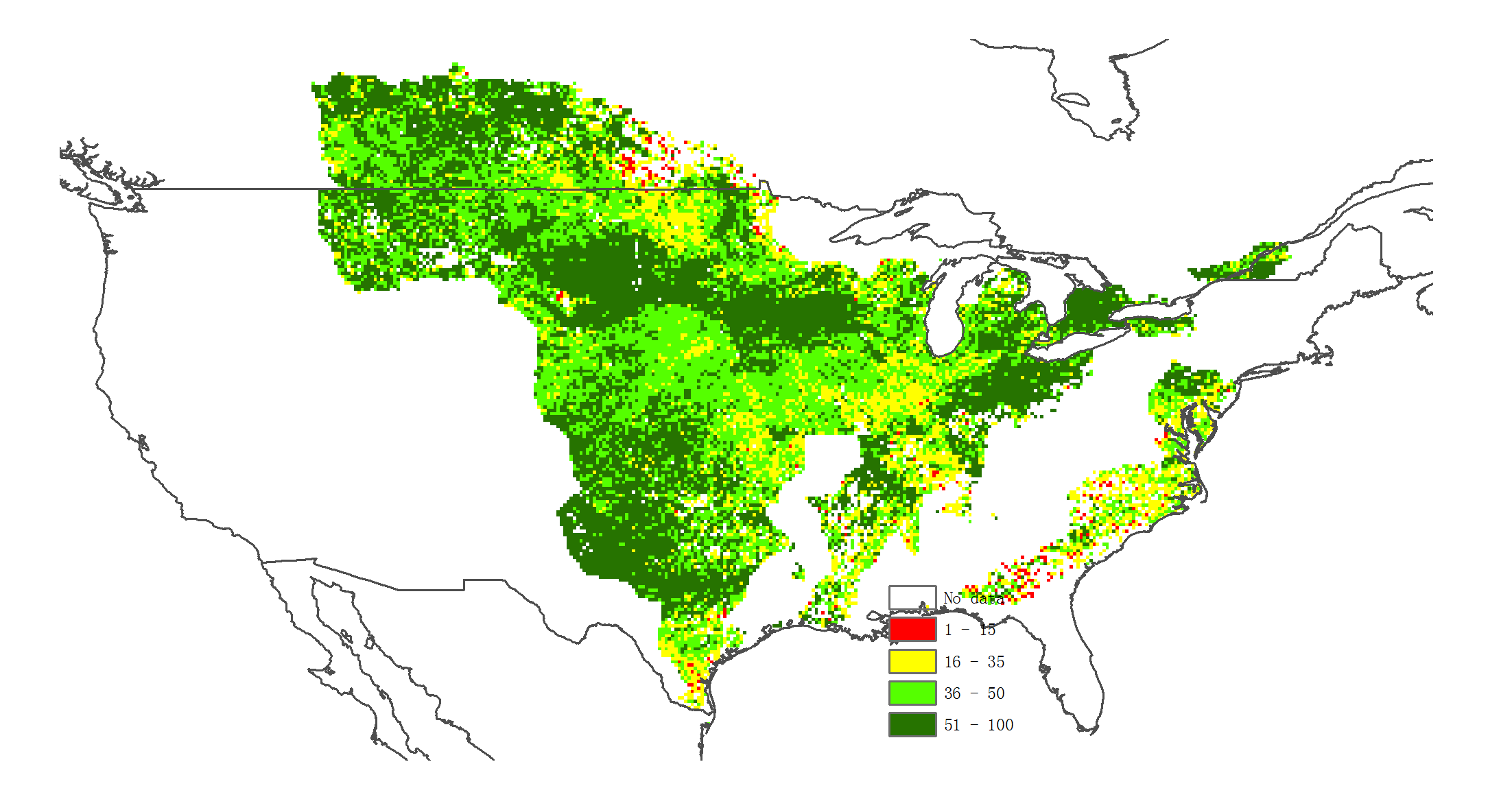
h. VHI minimumh
